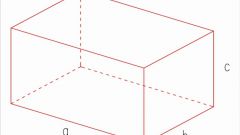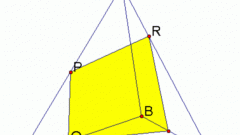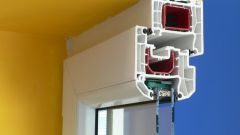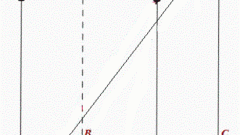Instruction
1
The diagonal section of the cube has the shape of a rectangle, the area (S) it is easy to calculate, knowing the length of any edge (a) three-dimensional figures. In this rectangle one of the sides is the height, which coincides with the length of the edge. The length of the other diagonal - calculate the Pythagorean theorem for the triangle in which it is the hypotenuse, and the two edges of the base - the legs. In General it can be written as: a*√2. The area of the diagonal section find by multiplying the two sides, the length of which you found out: S = a*a*√2 = a2*√2. For example, if the edge length of 20 cm the area of the diagonal section of the cube should be approximately equal 202*√2 ≈ 565,686 cm2.
2
To compute the area of the diagonal cross section of the parallelepiped (S) proceed the same way, but note that the Pythagorean theorem in this case involved the legs different lengths - length (l) and width (w) volumetric shapes. The length of the diagonal in this case is equal to √(l2+w2). Height (h) may also vary from the edge lengths of the bases, so in General the formula for the area of the cross section can be written as: S = h*√(l2+w2). For example, if the length, width and height of a cuboid are equal, respectively, 10, 20 and 30 cm square of its diagonal section approximately 30*√(102+202) = 30*√500 ≈ 670,82 cm2.
3
The diagonal cross-section of the quadrangular pyramid has a triangular shape. If the height (H) of the polytope are known, and at its base lies a rectangle, the lengths of connected edges (a and b) which is also given in the conditions, the calculation of the area of the cross section (S) begin with computing the length of a diagonal of the base. As in previous steps, use the triangle of the two edges of the base and diagonal, where the Pythagorean theorem the length of the hypotenuse is equal to √(a2+b2). The height of the pyramid in this polyhedron coincides with the height of the triangle diagonal cross-section, is lowered to the side whose length you just determined. So to find the area of a triangle, find half of the product height on the length of the diagonal: S = ½*H*√(a2+b2). For example, at a height of 30 cm and lengths of adjacent sides of the base 40 and 50 cm the area of the diagonal section should be approximately equal to ½ *30*√(402+502) = 15*√4100 ≈ 960,47 cm2.







